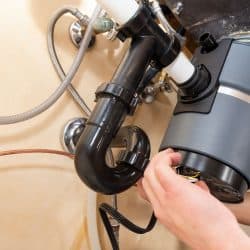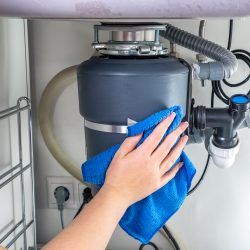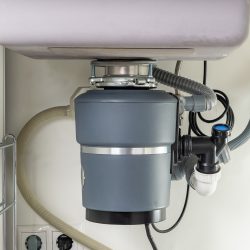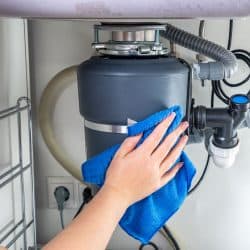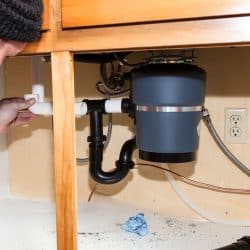The kitchen sink is filled with odorous water refusing to go down the drain. It is safe to assume that your garbage disposal is clogged and potentially harmful bacterias are multiplying in your kitchen sink. Perhaps you are wondering if you could unclog the drain with a plunger? We've researched this and found helpful results to share with you!
There are a few methods that will unclog a garbage disposal with standing water. The most referenced method is unclogging the drain with a sink plunger or using a chemical drain cleaner to dislodge the clogs within minutes.
Are you wondering why your garbage disposal won't drain? Or how to manually drain a garbage disposal? Please continue to read this post; we have informative research results to share with you!
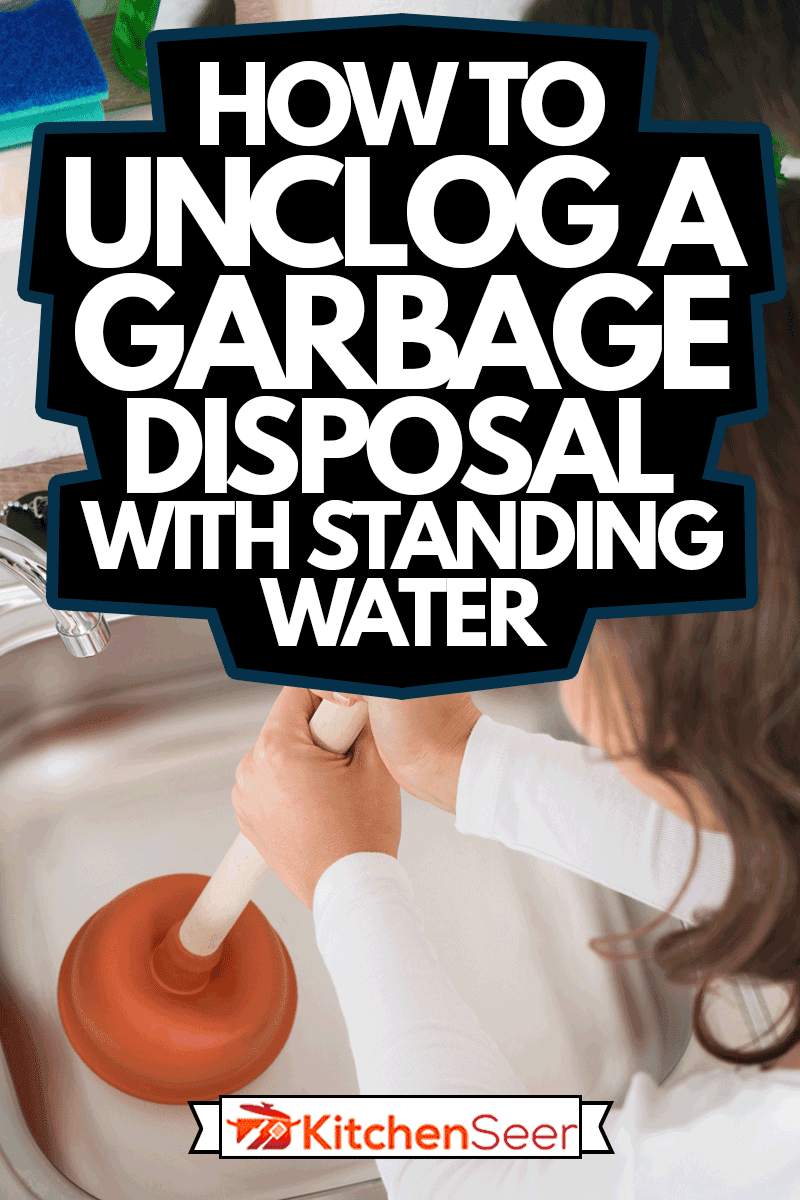
How to unclog a garbage disposal with standing water
Suppose you walk into the kitchen after a long day to discover the kitchen sink is halfway filled with murky, smelly water. Try turning the garbage disposal on to see if it will clear the sink. If not, there's a clog preventing the water from draining correctly.
Often homeowners can solve these minor plumbing issues themselves without calling a plumber or maintenance technician.
Disclaimer! Before attempting any of the following suggestions. Make sure the garbage disposal is turned off, and you turned off the circuit breaker to the garbage disposal to avoid accidental injuries or property damages.
The plunger method
The best advice is to use a sink plunger to dislodge the clogs. Place the plunger over the sink drain and make sure it suctions to the drain. If it does not suction, you will not be able to plunge the drain.
Once the plunger is well suctioned, forcefully plunge the plunger up and down for a few minutes. Depending on the clog, you could plunge the drain with intervals of six to eight plunges and then recheck the drain.
You will hear the water moving in the pipes during this time, and the plunger's suction will increase. After a few minutes of plunging, the clog should release, and the water will drain out of the sink. Once the water starts to drain, turn the hot water on and let it run for three to five minutes to flush the garbage disposal and pipes.
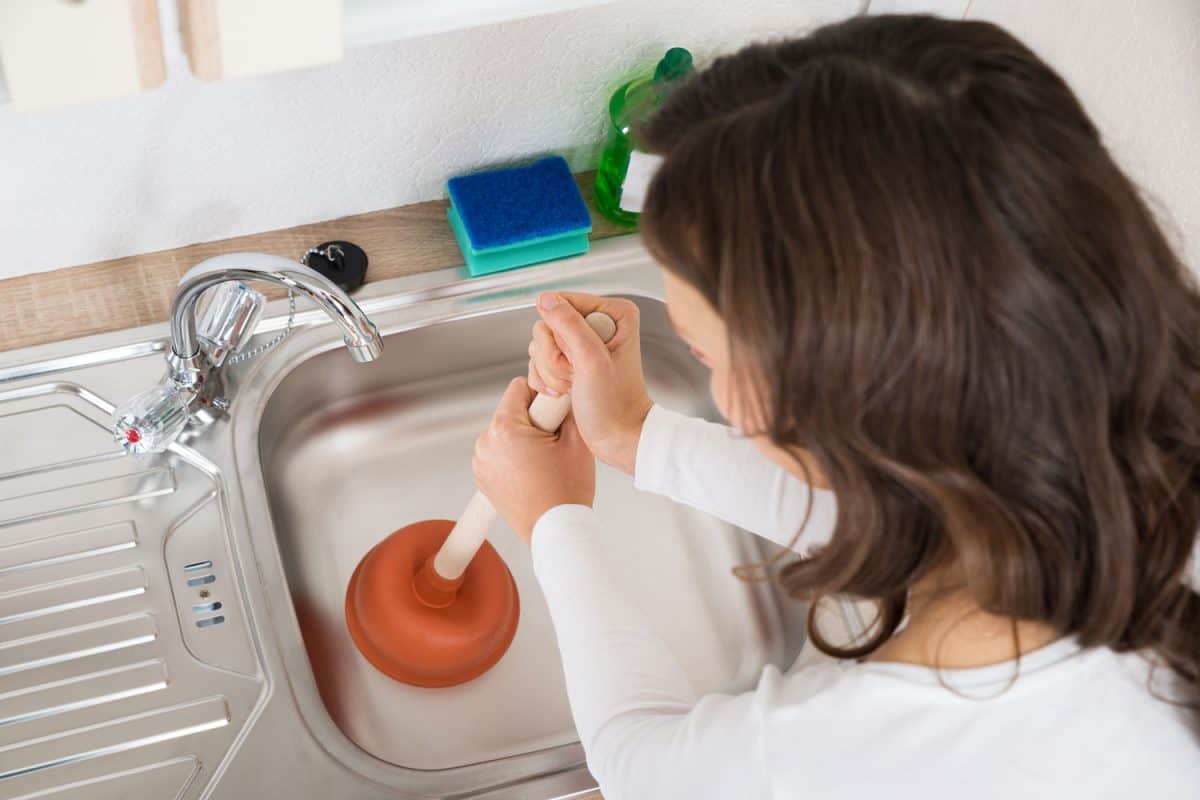
The dowel method
If plunging didn't work, a clog inside the garbage disposal unit caused a jam in the blades. The best way to remedy this issue is to use a long sturdy wooden dowel to get those blades moving again. Before attempting this, make sure the garbage disposal and circuit breaker must be off!
Firstly, remove any standing water from the sink with a bowl or scoop. Secondly, insert the dowel into the drain opening where the garbage disposal is located. Thirdly, push the dowel to the bottom of the unit and manually move the blades to dislodge and unclog the garbage disposal.
After you clear the clog and dislodge the blades remove the dowel and run hot water for at least five minutes to flush the garbage disposal, pipes, and the kitchen sink.

Why won't my garbage disposal drain?
Generally, there are a few reasons why the garbage disposal will not drain. The most common issue is that clogs made of food debris are trapped inside the garbage disposal, and the blades are blocked. Another possibility is that a clog has lodged within the kitchen sinks' drain piping and won't allow the wastewater to release.
Also, ask yourself if the garbage disposal took more time than usual to grind up foods or hesitates when turned on, and if it makes loud grinding noises. If so, these could be signs that the garbage disposal is breaking down.
If the garbage disposal is broken, you will need to replace the unit or contact a professional to install your new garbage disposal.
What should not be put in the garbage disposal?
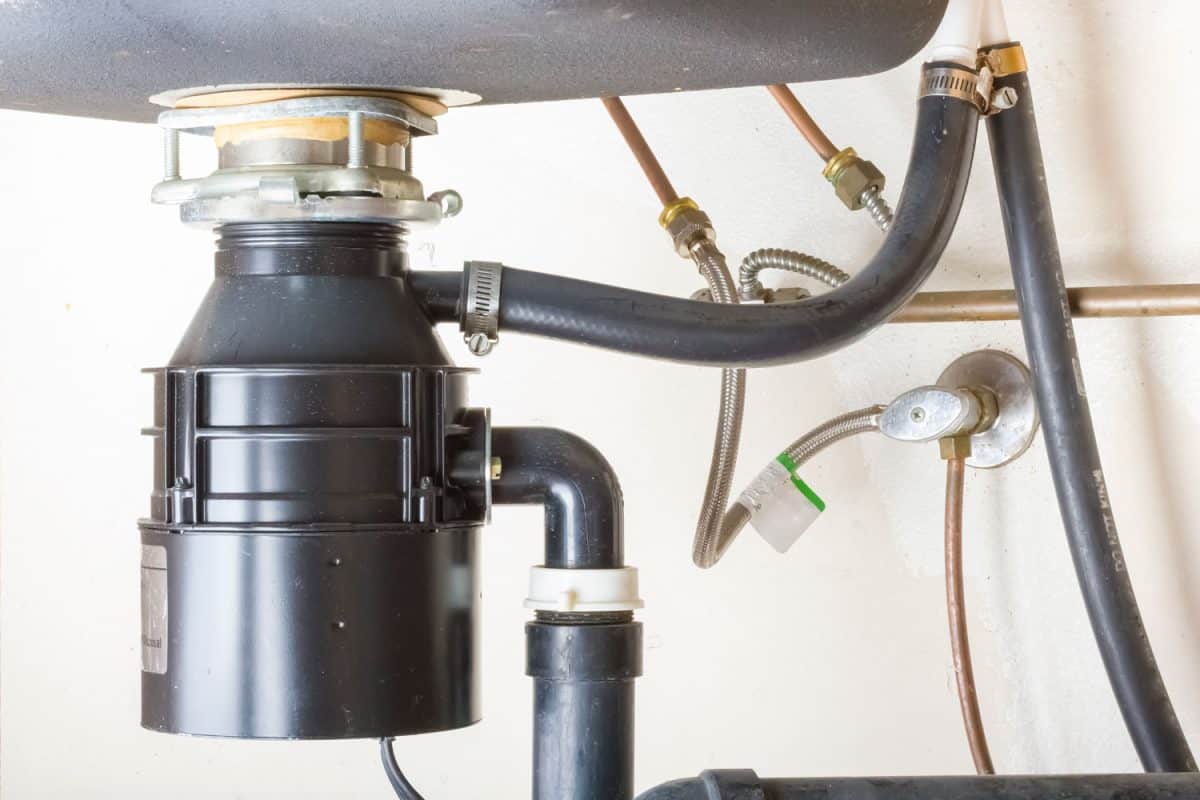
Grease and Oil
Cooks should never pour greases, fats, or any oils into a garbage disposal. Because once the fats have cooled, those will harden within the pipes, creating blockages that will cause the sink to fill with standing water.
Please follow the guidelines below and the suggested maintenance presented in the garbage disposal's owner's manual to prevent these issues. This way, you can ensure that you will keep your garbage disposal clog-free and in working condition.
Eggshells and Shellfish
Avoid eggshells and shellfish. Those will not break down entirely, even after they go through the garbage disposal. Instead, they will accumulate in the garbage disposal and the kitchen sinks' drain piping.
Dairy Products
Also, foods containing dairy, like butter, creams, and ice creams, never go in the garbage disposal. The reason is that the dairy-based fats will solidify and cause clogs in the garbage disposal or your kitchen pipes.
Coffee Grounds
Coffee grounds will easily slip through the garbage disposal without issues. However, the grounds will cling to the sides of the pipes and mesh with other clogs and food debris, making a massively tough clog to dislodge. Consider dumping your coffee grounds directly into the compost or trash to avoid this issue altogether.
Starchy Foods
Starchy foods like noodles and rice are best avoided because the starchy food particles will get diced up in the garbage disposal and lumped together. This can form a large starchy clog that will block the drain and cause the garbage disposal blades to gum up with starchy debris.
Fibrous Vegetables
Fibrous vegetables like artichokes, asparagus, celery, cornhusks, edamame pods, string beans, and rhubarb are problematic for garbage disposals.
Even the best garbage disposals on the market with multi-grind technology can only grind up these vegetables in minimal amounts. The average garbage disposal will partially slice the fibrous vegetables, and the strong fibers will wrap up into a sizeable ball and clog the pipes.
Has your garbage disposal been working less than optimally? Are you wondering if the spoon that fell into the disposal last week has affected its functionality? Click here to read "Can A Spoon Break A Garbage Disposal?"
How do you manually drain a garbage disposal?
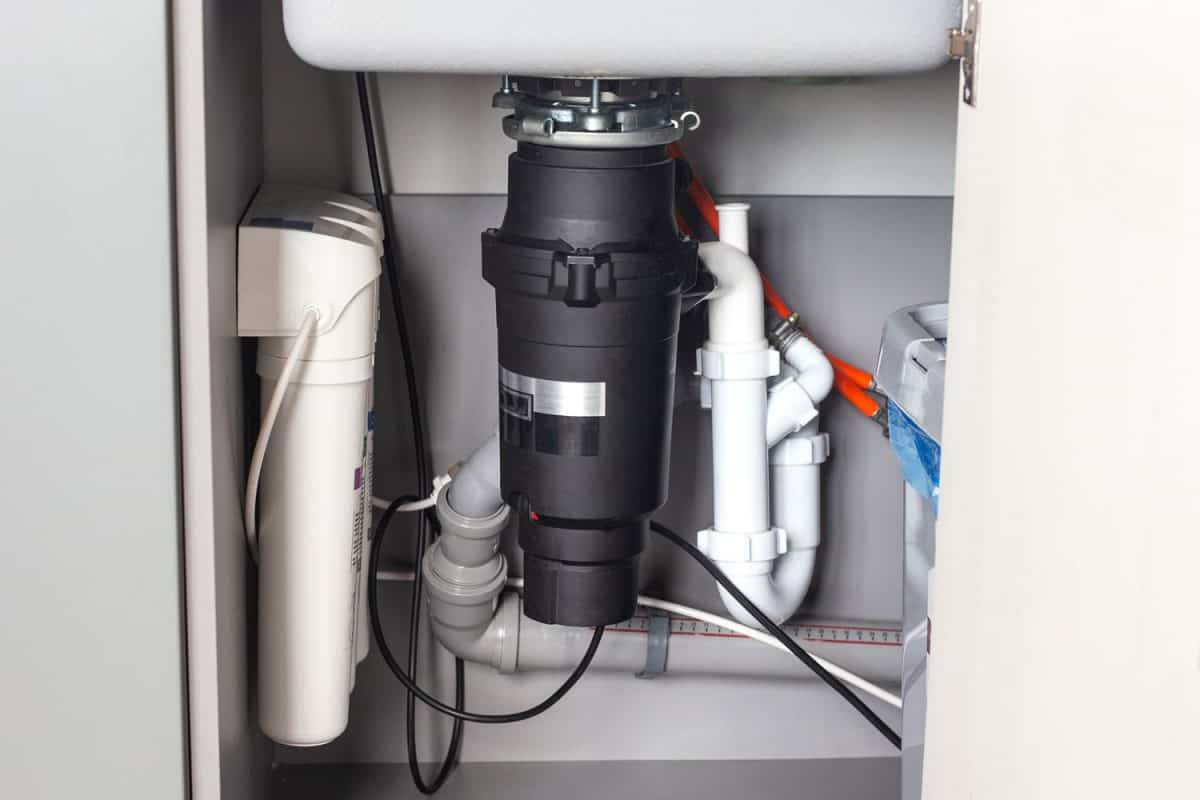
The most popular manual method is plunging the drain with a sink plunger or using a chemical drain cleaner approved for garbage disposals. Moreover, not every drain cleaner is deemed safe for drain garbage disposals. Please be sure to read the labeling before purchasing a drain cleaner to ensure it is formulated for garbage disposal usage.
Suppose you used a drain cleaner that is not safe for garbage disposals. The harsh chemicals could ruin the garbage disposal unit and render the fairly delicate blades dull and useless. If you prefer to avoid using harsh chemicals in your kitchen.
Try a baking soda and vinegar solution, a non-toxic cleaning option to clean the drain and garbage disposal. Pour 1/2 cup of baking soda into the drain and one cup vinegar.
Allow the solution to sit for about 3o minutes. Then, rinse the drain with hot water for about three to five minutes to flush any dislodged debris out of the drain.
Click here to view Liquid plumber Pro-strength at Amazon.
If you are interested in avoiding harsh chemicals in your kitchen, consider using Bio Fresh for an earth-conscious choice.
Click here to view Bio Fresh drain cleaner at Amazon.
If your kitchen has a quality dishwasher, you might wonder does it have a built-in garbage disposal? Click here to read "Do Dishwashers Have Garbage Disposals?"
Can I use a plunger on a garbage disposal?
Using a plunger is an easy and quick way to unclog plugged drains and garbage disposals. For the best results, use a plunger designed for sinks. Because plungers that are large enough for unclogging toilets are too large to suction the kitchen sink's drain to unplug it effectively.
Word of caution--never use a plunger used in a toilet in the kitchen sink because it will transfer harmful fecal bacterias to your kitchen. This is dangerously harmful to human health and food safety and should never be present in a kitchen.
Click here to view a sink plunger at Amazon.
In closing
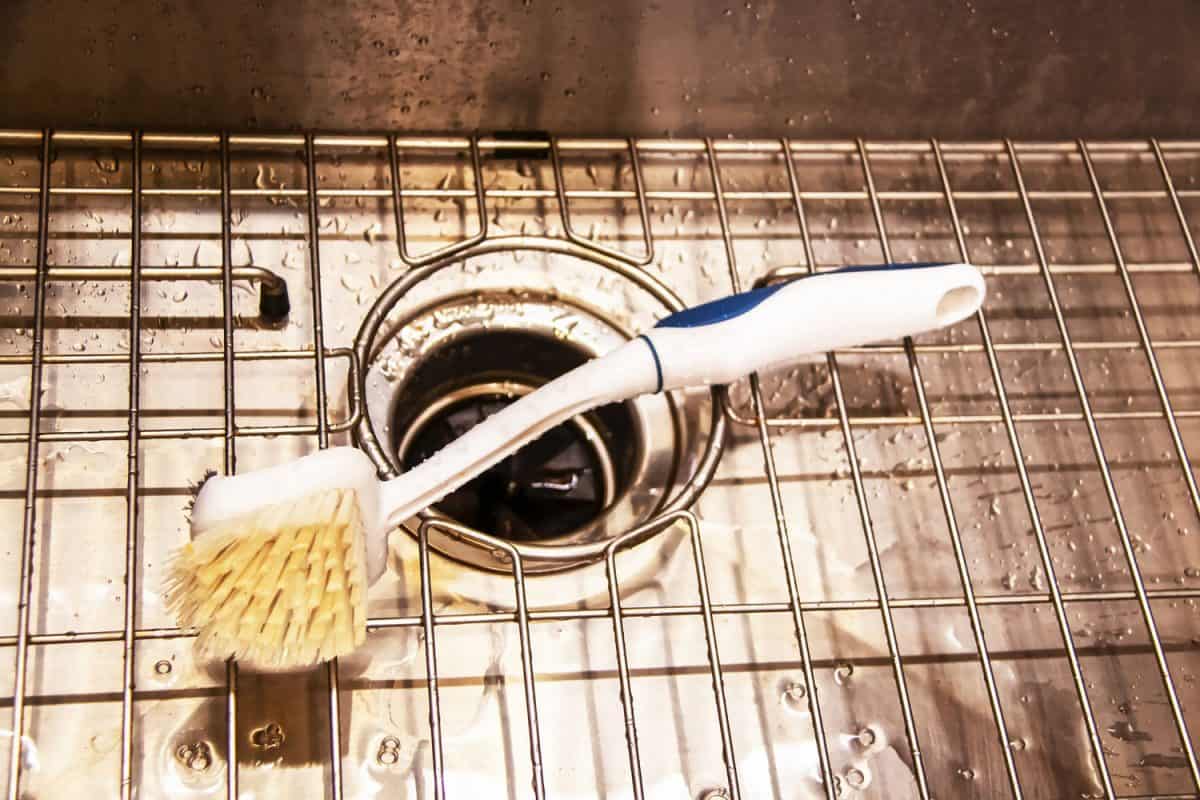
Garbage disposals will significantly reduce your trash output and help reduce the burden on your local landfill. Great news for Mother Earth, less garbage going into landfills!
We hope that this article has helped you learn valuable information about unclogging garbage disposals. Please visit kitchenseer.com soon for additional educational content and culinary inspirations!
Before you go, please, be sure to check out some of our other posts to find helpful suggestions for everyday household issues.
Should A Dishwasher Be Flush With Cabinets And Countertop?
Will A Trash Compactor Crush Aluminum Cans?
How To Remove A Built-In Trash Compactor In 4 Easy Steps



